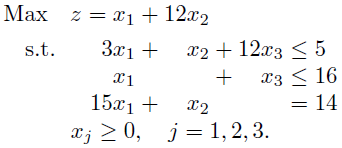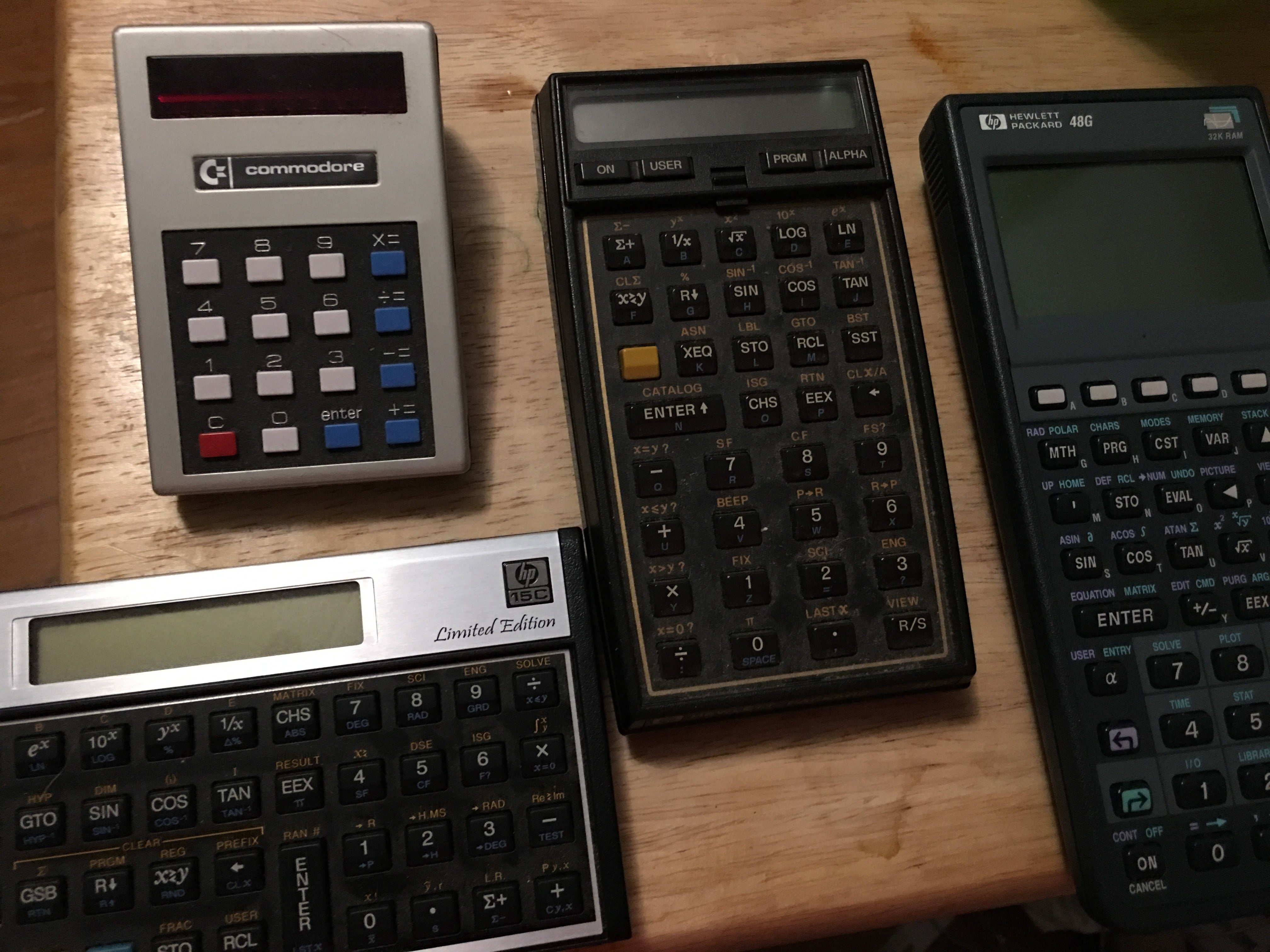 "Just Jeepin'" (macintux)
"Just Jeepin'" (macintux)
04/16/2020 at 10:15 • Filed to: None
 8
8
 13
13
 "Just Jeepin'" (macintux)
"Just Jeepin'" (macintux)
04/16/2020 at 10:15 • Filed to: None |  8 8
|  13 13 |

There are many names in the computer science hall of fame, but few command
acclaim and appreciation quite like Donald Knuth. He’s a remarkable man, at age 82
still working on a project he started as a graduate student. One of his programs, TeX,
is used by scientists around the world to document a
nd publish
their research.
Good read about a very humble, rounded man , even if you know nothing about the world of software development.
!!! UNKNOWN CONTENT TYPE !!!
 SBA Thanks You For All The Fish
> Just Jeepin'
SBA Thanks You For All The Fish
> Just Jeepin'
04/16/2020 at 10:41 |
|
He literally “wrote the book”...
Funny thing is that his concepts actually sparked the whole font revolution for us at Hewlett-Packard back in the day, too. His contributions surround us every day and few people realize it.
 Just Jeepin'
> SBA Thanks You For All The Fish
Just Jeepin'
> SBA Thanks You For All The Fish
04/16/2020 at 10:43 |
|
Can you tell me more about what happened at HP?
Typography has always been a minor interest of mine, but I’ve never really dived in.
 Bryan doesn't drive a 1M
> Just Jeepin'
Bryan doesn't drive a 1M
> Just Jeepin'
04/16/2020 at 10:44 |
|
I like hearing about the people behind math/CS things. I had a coworker who not only knew every piece of technical information off the top of his head, but also would tell us the personal story of whoever created the thing too. It honestly makes a difference when learning a new technical skill. Something about the way our squishy human brains work, I guess.
 Just Jeepin'
> Bryan doesn't drive a 1M
Just Jeepin'
> Bryan doesn't drive a 1M
04/16/2020 at 10:51 |
|
Those of us in the field are fortunate that many of the giants are still around, and still approachable. I wrote a bit about one I called a friend, too briefly.
https://oppositelock.kinja.com/oh-joe-1834189031
 SBA Thanks You For All The Fish
> Just Jeepin'
SBA Thanks You For All The Fish
> Just Jeepin'
04/16/2020 at 10:54 |
|
Sure. It’s a longer post, but a bunch of us working the “peripherals beat” at HP were all Stanford graduate school guys (and a couple of gals). One manager had a complete love for Knuth and basically ran with the idea of using DK’s mathematical models to create a range of on-the-fly fonts... when the world was still largely dominated by “Courier 10 Pitch” font as “standard. It was considered breakthrough to have a range of easily accessible fonts... Keep in mind that Windows wasn’t really “baked” at that point either.
John Downing, another Bay Area guy, created a complete company (Pacific Data Products) around after-market font cartridges for the LaserJet series... but the foundational work was always Knuth’s efforts on mathematical font models.
Personally? I still prefer “designer created” fonts... but that’s just me. Knuth basically laid the groundwork for the world of free fonts we take for granted these days. Back then a new font was worth its weight in gold.
The point guy I’m thinking of ended up going to Kodak to try to help Antonio turn it around. It’s a small world, but those guys all started back at Palo Alto when I was there.
 Just Jeepin'
> SBA Thanks You For All The Fish
Just Jeepin'
> SBA Thanks You For All The Fish
04/16/2020 at 11:00 |
|
Nice. I still have a 4-series LaserJet gathering dust that I picked up used many years ago; that model was the first printer I ever managed professionally, and while printing software has always sucked, I loved those printers.
I used LaTeX in college for many of my calculus assignments, so it was a t reat to have an opportunity to attend a Lamport lecture about software proofs at my previous job. Another polymath, another giant.
Thanks, and if you ever get the urge, I’d love to read the longer version of that story. HP calculators and HP printers have both been favorites of mine; unfortunately my collection of RPN calculators was stolen when my house was broken into last November.
 Just Jeepin'
> SBA Thanks You For All The Fish
Just Jeepin'
> SBA Thanks You For All The Fish
04/16/2020 at 11:03 |
|
Found a photo, very sad they’re all gone.

 ItalianJobR53 - now with added 'MERICA and unreliability
> Just Jeepin'
ItalianJobR53 - now with added 'MERICA and unreliability
> Just Jeepin'
04/16/2020 at 11:34 |
|
Thanks for sharing this!
I find most of the articles that you post quite interesting and I know I would’ve never found them if you hadnt posted them, so please keep on posting!
Also, this is quite powerful:
“The ultimate test of whether I understand something is if I can explain it to a computer. I can say something to you and you’ll nod your head, but I’m not sure that I explained it well. But the computer doesn’t nod its head. It repeats back exactly what I tell it. In most of life, you can bluff, but not with computers.”
 Just Jeepin'
> ItalianJobR53 - now with added 'MERICA and unreliability
Just Jeepin'
> ItalianJobR53 - now with added 'MERICA and unreliability
04/16/2020 at 11:37 |
|
That leapt out at me too. A shame politicians don’t have to pass such a strict test with their proposals and tweets.
 SBA Thanks You For All The Fish
> Just Jeepin'
SBA Thanks You For All The Fish
> Just Jeepin'
04/16/2020 at 12:01 |
|
It’s funny how long they built the 12C... and what a high-margin product line it was. It’s “possible” you can still buy a new one. I haven’t looked in ages but it was always the way you could tell a true finance guy.
 SBA Thanks You For All The Fish
> Just Jeepin'
SBA Thanks You For All The Fish
> Just Jeepin'
04/16/2020 at 12:03 |
|
Yeah, I had a large format 4-series that I LOVED. I used to kid the marketing guys that I considered that printer the Pinnacle of rugged design. It would print on anything, any size, any weight...
I just sorta roll my eyes at the cheap-crap HP printers you see on the shelf these days. Back in the day, HP-Canon built rugged gear. It’s one of the things I loved about HP... Now? All consumer grade junk.
 Just Jeepin'
> SBA Thanks You For All The Fish
Just Jeepin'
> SBA Thanks You For All The Fish
04/16/2020 at 12:04 |
|
The 12C always baffled me because I never understood finance at all. It was definitely the scientific ones I was most interested in.
Senior year in high school a friend of mine and I drove to Lafayette, Indiana because there was a store there that had HP calculators. Turned out they had 2 or 3, not quite the calculator Mecca I was hoping for, but it was silly to expect anything else.
 SBA Thanks You For All The Fish
> Just Jeepin'
SBA Thanks You For All The Fish
> Just Jeepin'
04/16/2020 at 12:11 |
|
I consider the 12C “the Porsche 911" of calculators— overbuilt, stodgy, but built to just the right form factor and specs to be pretty timeless.
But, yeah, a trained finance guy could easily knock out “time value of money” calculators on a 12C that were basically impossible in the pre-calculator era.